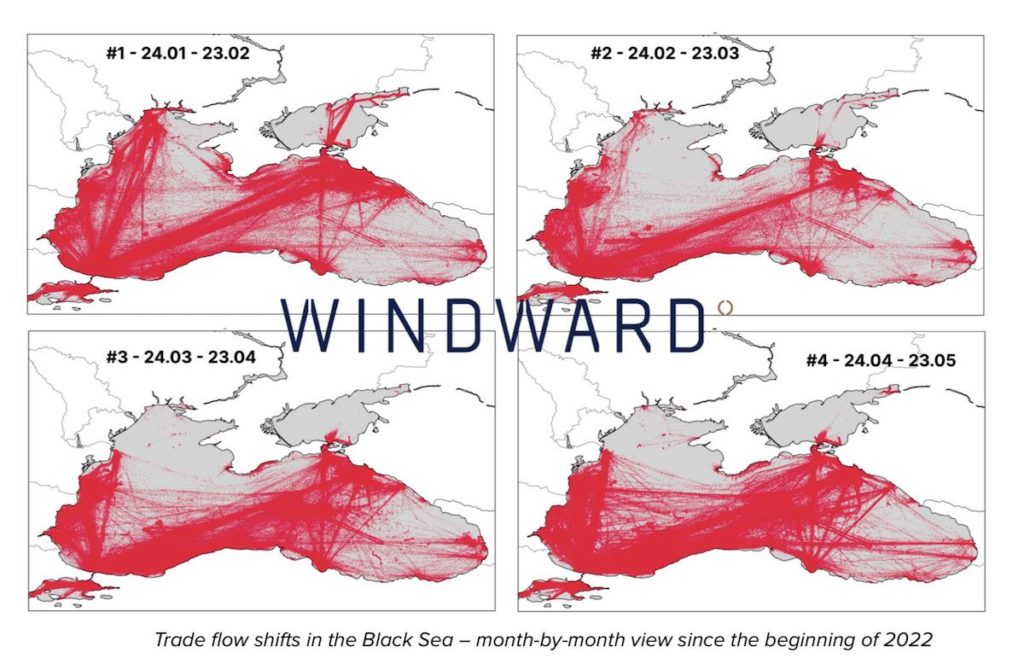More foreign ships targeted in Ukrainian waters

Concern is mounting for ships remaining in Ukrainian waters after another vessel was holed by Russian munitions and reports emerge of the leader of a Russian-backed breakaway region trying to commandeer ships docked at Mariupol.
A 42-year-old Tanzanian flagged chemical tanker, Brentix, was struck by a cluster submunition at Ochakov port yesterday, images provided by Ukrainian Shipping Magazine showing the bow was punctured. Firefighters arrived on the scene and extinguished the blaze with no injuries reported.
The vessel becomes the 16th merchant ship tracked by Splash to have been hit by munitions in the 98 days since Russian forces invaded Ukraine towards the end of February.
Another ship hit by an explosive projectile earlier in the conflict was the Tzarevna bulk carrier (pictured top), a ship that has since become one of many vessels moored at Mariupol threatened to be requisitioned by invading forces. Mariupol is key Ukrainian port on the Sea of Azov, recently taken over by Russian forces.
The ship, owned by Italy’s Fratelli Cosulich, is laden with steel slabs originally bound for Italy. It is now one of up to six foreign vessels that could be taken by the Russian-controlled separatist government in Donetsk, whose leader has said he is keen to set up a merchant fleet. Fratelli Cosulich executives have urged the Italian government to get involved and protect its ship and others in the port from being taken over.
Pro-Russian separatist leader Denis Pushilin indicated on Tuesday his willingness to take the ships and rename and reflag them. As well as the Tzarevna, three Ukrainian ships, a Turkish vessel and a Lebanese-controlled ship are all being targeted by Pushilin, according to multiple media sources.
Russian merchant ships, meanwhile, have entered the de-mined port this week to start taking shipments of grain and steel.
With the war about to enter its 100th day Israeli maritime AI firm Windward has been tracking events closely.
Windward data reveals a growing trend of Russian oil majors selling away their vessels to non-Russian companies. Since the beginning of the invasion, there were 180 ownership changes from Russian entities to non-Russian entities. This number represents 53% of the total ownership changes that took place in all of 2021 – in just three months. Windward has also produced maps to show how Black Sea trading patterns have changed during the course of the war (see below).
In related, significant news, both the European Union and the United Kingdom have said they will ban insuring Russian ships, something that is expected to seriously stymie Russian exports further.


Hope the sailors /crew able to get save.
Any attempt to develop a new fleet operation is likely to run into barriers to entry in most ports around the world. This all sounds like bluster. The withdrawal of insurance cover and other measures should stymie this lunatic aspiration.
What is worrying is the continued involvement of “neutral” vessels moving Russian cargoes despite bans and embargoes being applied. How is this still happening?